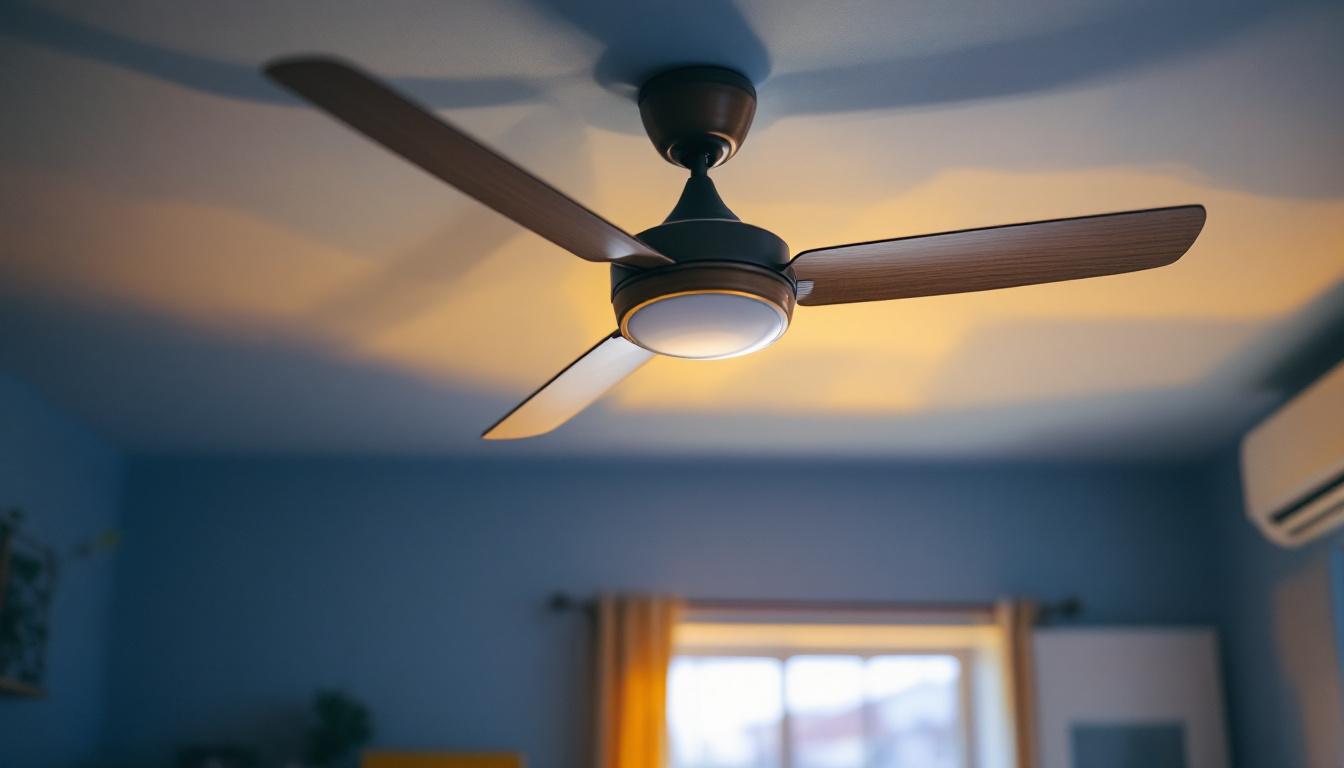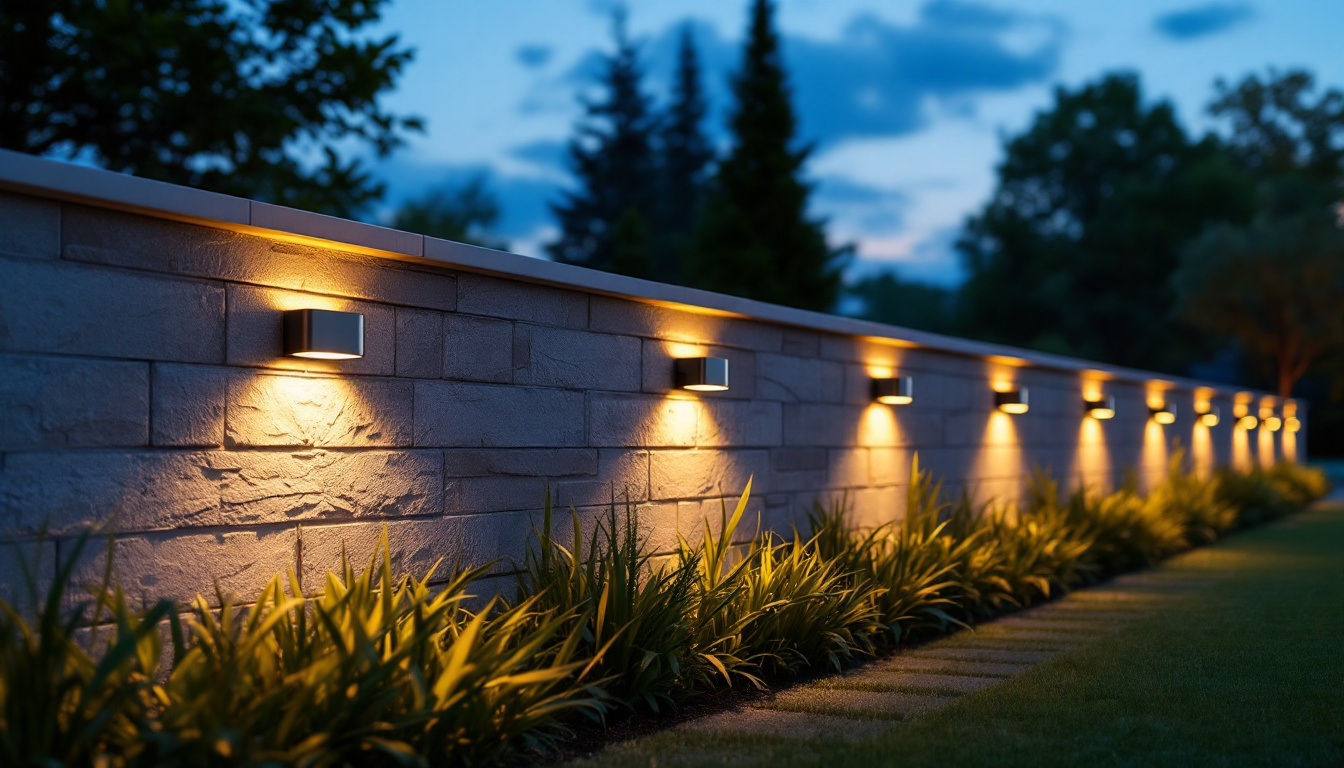
In the realm of interior design and functionality, ceiling fans play a crucial role in enhancing comfort while also contributing to energy efficiency. For lighting contractors, understanding how to optimize ceiling fans for maximum efficiency in lighting can lead to better client satisfaction and reduced energy costs. This article delves into the synergy between ceiling fans and lighting, offering insights into how to achieve optimal results.
Ceiling fans are often overlooked in lighting design discussions, yet they serve a dual purpose: providing airflow and enhancing illumination. By circulating air, ceiling fans can create a comfortable environment that allows for lower thermostat settings, ultimately reducing reliance on artificial lighting. This not only contributes to a more pleasant atmosphere but also promotes energy conservation, aligning with modern sustainability goals.
Moreover, the strategic placement of ceiling fans can influence the effectiveness of lighting fixtures. When used correctly, they can help distribute light more evenly throughout a space, minimizing dark corners and enhancing overall visibility. This is particularly important in larger rooms or open-concept designs, where lighting can easily become uneven. By ensuring that light is evenly distributed, ceiling fans can also create a more inviting space for social gatherings or family activities.
One of the primary advantages of integrating ceiling fans into lighting design is energy efficiency. Ceiling fans consume significantly less energy compared to air conditioning systems. By using fans in conjunction with lighting, contractors can help clients achieve a more sustainable approach to home comfort. This dual functionality not only enhances comfort but also aligns with the growing trend of eco-friendly living, where homeowners are increasingly seeking ways to reduce their carbon footprint.
Additionally, many modern ceiling fans come equipped with energy-efficient LED lights, which not only reduce energy consumption but also have a longer lifespan than traditional bulbs. This combination can lead to substantial savings on electricity bills over time. Furthermore, the ability to control fan speed and light intensity through smart home technology allows homeowners to customize their environment, making it even more energy-efficient and tailored to their preferences.
Ceiling fans are available in a myriad of styles, colors, and designs, making them an excellent choice for enhancing the aesthetic appeal of a room. When selecting fans, contractors should consider the overall design theme of the space. A well-chosen ceiling fan can complement lighting fixtures, creating a cohesive look that elevates the room’s ambiance. From sleek, modern designs to rustic, vintage styles, the right ceiling fan can serve as a statement piece that ties together various elements of interior decor.
Furthermore, the integration of stylish ceiling fans can also increase the perceived value of a property. Homeowners are often willing to invest in features that enhance both comfort and style, making ceiling fans an attractive selling point. In addition, the versatility of ceiling fans allows them to be used in various settings, from cozy living rooms to expansive outdoor patios, thus broadening their appeal. As homeowners increasingly prioritize both functionality and aesthetics, the role of ceiling fans in lighting design continues to gain recognition as an essential element in creating beautiful and efficient spaces.
When selecting ceiling fans for a project, several factors must be considered to ensure they work harmoniously with lighting. The size, style, and functionality of the fan can greatly impact its effectiveness in enhancing illumination.
The size of the ceiling fan should correspond to the dimensions of the room. A fan that is too small may not provide adequate airflow, while one that is too large can overwhelm the space. As a general guideline, for rooms up to 75 square feet, a fan with a blade span of 29 to 36 inches is ideal. For larger rooms, fans with a blade span of 42 to 60 inches are recommended.
In terms of lighting, a properly sized fan can help distribute light more evenly, reducing shadows and creating a well-lit environment. It is essential to consider the height of the ceiling as well; higher ceilings may require fans with longer downrods to optimize airflow and lighting effectiveness.
The style of the ceiling fan should align with the overall design aesthetic of the space. For contemporary interiors, sleek and minimalist fans may be the best choice, while traditional spaces may benefit from ornate designs. Additionally, the color and finish of the fan should complement the lighting fixtures to create a harmonious look.
Contractors should also consider the type of lighting that will be used in conjunction with the ceiling fan. For example, if the fan includes integrated lighting, it is crucial to ensure that the light output complements the fan’s design and serves the intended purpose of the room.
Proper installation of ceiling fans is critical to achieving maximum efficiency in lighting. Incorrect installation can lead to poor performance, reduced airflow, and inadequate lighting. Here are some essential tips for ensuring optimal installation.
Ceiling fans should be installed at an appropriate height to maximize airflow and lighting effectiveness. The ideal height for a fan is typically 8 to 9 feet above the floor. This height allows for proper air circulation while ensuring that the light is distributed evenly throughout the room.
Placement is also crucial; fans should be centered in the room or above key areas such as seating arrangements. This positioning not only enhances airflow but also ensures that the light reaches the intended areas without creating dark spots.
When installing ceiling fans, it is essential to ensure that the electrical wiring is adequate to handle the fan’s power requirements. Contractors should verify that the existing wiring can support both the fan and any integrated lighting fixtures. In some cases, it may be necessary to upgrade the wiring to accommodate the additional load.
Additionally, incorporating smart technology into ceiling fan installations can enhance efficiency. Smart fans can be controlled via mobile apps or home automation systems, allowing users to adjust settings based on their preferences and energy-saving goals.
To achieve maximum efficiency, it is essential to consider how lighting solutions can be integrated with ceiling fans. This integration not only enhances functionality but also improves the overall aesthetic of the space.
The type of bulbs used in conjunction with ceiling fans can significantly impact energy efficiency and lighting quality. LED bulbs are highly recommended due to their low energy consumption and long lifespan. They produce less heat compared to incandescent bulbs, making them an ideal choice for use with ceiling fans.
Moreover, dimmable LED bulbs can provide flexibility in lighting levels, allowing homeowners to adjust the brightness according to their needs. This feature is particularly useful in multi-functional spaces where lighting requirements may vary throughout the day.
Layering light is a crucial technique in lighting design that involves using multiple light sources to create a well-balanced and inviting atmosphere. When combined with ceiling fans, layered lighting can enhance the overall effect of both elements.
For instance, combining ambient lighting from ceiling fans with task lighting from lamps or wall sconces can create a dynamic and versatile environment. This approach not only improves functionality but also adds depth and interest to the space.
Regular maintenance of ceiling fans is essential to ensure their longevity and efficiency. Dust and debris can accumulate on fan blades, hindering performance and affecting the quality of light. Implementing a maintenance routine can help keep fans operating at their best.
To maintain optimal performance, ceiling fans should be cleaned regularly. Dusting the blades with a soft cloth or using a vacuum with a brush attachment can help remove buildup. It is advisable to clean the fan at least once every few months, especially in areas with high dust levels.
Additionally, contractors should remind clients to check the balance of the fan periodically. An unbalanced fan can create noise and reduce efficiency. If wobbling occurs, adjusting the blade alignment or adding weights can help restore balance.
Ceiling fans can be used year-round, but their effectiveness can be enhanced by making seasonal adjustments. During warmer months, fans should rotate counterclockwise to create a cooling breeze, while in cooler months, they should rotate clockwise to circulate warm air. This simple adjustment can improve comfort levels and reduce reliance on heating and cooling systems.
Contractors should educate clients on these seasonal adjustments to maximize the benefits of their ceiling fans and lighting solutions.
Incorporating ceiling fans into lighting design offers numerous advantages, from energy efficiency to enhanced aesthetics. By understanding the importance of fan selection, installation, and maintenance, lighting contractors can optimize these devices for maximum efficiency.
As the demand for sustainable and stylish home solutions continues to grow, ceiling fans will remain a valuable asset in lighting design. By leveraging their benefits, contractors can provide clients with effective, energy-efficient solutions that enhance both comfort and style.
Ultimately, the synergy between ceiling fans and lighting can lead to improved client satisfaction, reduced energy costs, and a more sustainable approach to home design. Embracing this integration will not only elevate the quality of projects but also position contractors as leaders in the evolving landscape of lighting and design.
Ready to elevate your lighting projects with the most efficient ceiling fans on the market? Look no further than LumenWholesale, where we provide contractors with the highest quality, spec-grade lighting products at unbeatable wholesale prices. Say goodbye to local distributor markups and hello to our extensive selection that meets rigorous industry standards. With free shipping on bulk orders, you can stock up on superior lighting solutions and pass the savings onto your clients. Enhance your lighting designs today and discover wholesale lighting at the best value with LumenWholesale.

Discover essential insights into parking lot pole lights with our comprehensive guide tailored for lighting contractors.

Explore the transformative journey of the lighting industry in “Level Of Light: The Evolution in the Lighting Industry,” uncovering innovations from incandescent bulbs to smart LED systems that are reshaping how we illuminate our world..

Discover why the toggle switch light switch is the unsung hero in lighting projects.

Discover how lighting contractors can elevate their projects with outdoor solar lights for walls.